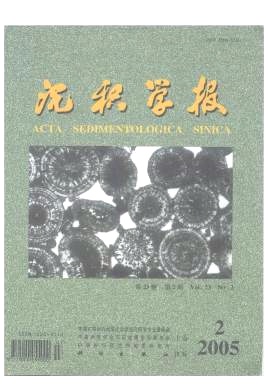HTML
| [1] | 1 许效松. 楚雄盆地沉积层序演化[J].岩相古地理,1999,(05):1-11. 2 陈根文. 楚雄弧后前陆盆地的形成与演化[J].云南地质,1999,(04):392-397. 3 谭富文,尹福光,许效松. 楚雄前陆盆地系统的构造单元及沉积标识[J].沉积学报,2000,(04):573-579. 4 Cao Debin. Characteristics of Triassic in Yunanjiang and its stratigraphic correlation[J].Yunnan Geology,2001,(04):392-400. 5 Robinson J W,McGbe P J. Sandstone-body and shale-body dimensions in a braided fluvial system: Salt Wash Sandstone member (Morrison formation), Garfield county,Utah[J].AAPG Bulletin,1997,(08):1267-1291. 6 Reynolds A D. Dimensions of Paralic Sandstone bodies[J].AAPG Bulletin,1999,(02):211-229. 7 Jordan T E,andFlemmings P B. Large-scale stratigraphic architecture, eustatic variation, and unsteady tectonism: a theoretical evaluation[J].Journal of Geophysical Research,1991,(B4):6681-6699. 8 Thorne J A,Swift D J P.Sedimenttation on continental margins, VI: a regime model for depositional sequences, their component systems tracts, and bounding surfaces[A].International Association of Sedimentologists Special Publication,1991.189-255. 9 Posamentier H W,Allen G P,James D P. Forced regressions in a sequence stratigraphy : concepts, examples and exploration significance[J].AAPG BULLETIN,1992,(10):1687-1709. 10 Heller P L,Paola C. Geomorphology and sequence stratigraphy due to slow and rapid base-level changes in an experimental subsiding basin(XES96-1)[J].AAPG Bulletin,2001,(05):817-838. 11 Scott R M,Tillman R W. Society of Economy Paleontologic Mineralogy[J].Core workshop,1981. 12 Kaufman P,Grotzinger J P,Mcormick D S. Depth-dependent diffusion algorithm for simulation in shallow marine depositional systems[A].Kansas Geological Survey,1991.489-508. 13 Paola C,Heller P L,Angevine C L. The large-scale dynamics of grain-size variation in alluvial basins, I: Theory[J].Basin Research,1992,(02):73-90. 14 Rivenaes J C.Application of a dual-lithology, depth-dependent diffusion equation in stratigraphic simulation[J].Basin Research,1992,(02):133-146. 15 张金亮,常象春,刘宝珺. 楚雄盆地上三叠统深盆气成藏条件研究[J].沉积学报,2002,(02):469-476. 16 李儒峰,金之钧,马永生. 盆地波动特征与生储盖层耦合关系分析--以楚雄盆地为例[J].沉积学报,2004,(03):474-480. 17 Harris P M,Kerans C,Beboub D G. Ancient outcrop and modern examples of platform carbonate cycles implications for subsurface correlation and understanding reservoir heterogeneity[A]. AAPG Memoir,1994.475-492. 18 Kerans C,Tinker S W. Use of quantitatively calibrated depositional models in constructing high-resolution sequence strtigraphic frameworks for reservoir characterization (abs)[J].AAPG Annual Convention Program,1994.186. 19 Mitchum R M,Van Wagoner J C. High-frequency sequence and their stacking patterns: sequence stratigraphic evidence of high-frequency eustatic cycles[J].Sedimentary Geology,1991.131-160. 20 Vail P R. Seismic stratigraphy interpretation procedures[A].AAPG Studies in Geology,1987.1-10. 21 Vail P R,Mitchum Jr R M,Thompson III S. Seismic stratigraphy and global changes of sea level, part 4: global cycles of relative changes of sea level[A].AAPG Memoir,1997.83-97. 22 Van Wagoner J C,Posamentier H W,Vail P R,Sarg J F, Loutit T S, Hardenbol J. An overview of the furdamentals of sequence stratigraphy and key definitions[A].SEPM Special Publication,1988.139-145. |






 DownLoad:
DownLoad: